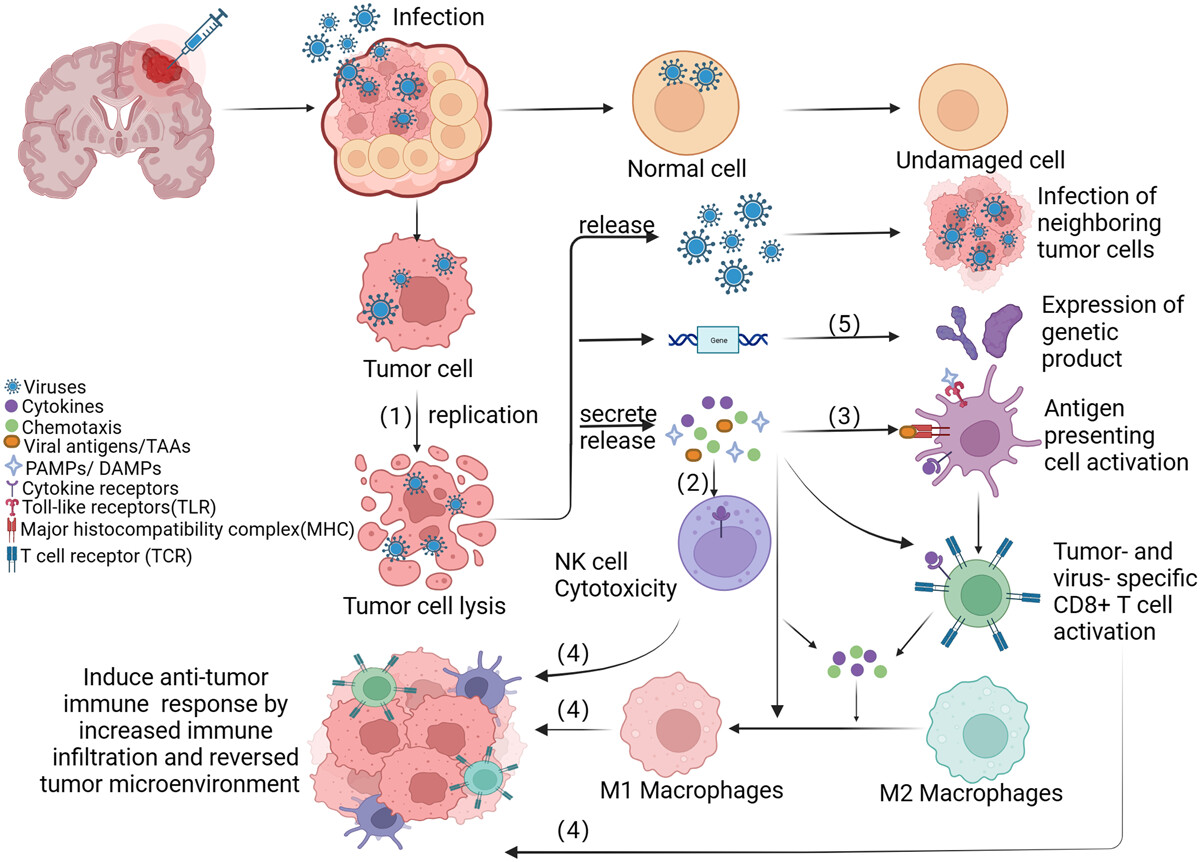MedComm-Future Medicine | Oncolytic viral therapy as promising immunotherapy against glioma

Open the phone and scan

Antitumor effects of oncolytic virus (OVs) in brain tumor. (1) OVs can selectively infect tumor cells and induce tumor cells lysis including apoptosis, pyroptosis, and necroptosis. (2) Innate immune response. Tumor cell lysis can elicit the release of tumor-associated antigens (TAAs), damage-associated molecular patterns (DAMPs), and pathogen-associated molecular patterns (PAMPs), which can activate and recruit dendritic cells (DCs) and innate lymphoid cells such as NK cells for early clearance of virus-infected cells. (3) Adaptive immune response. The release of TAAs, DAMPs, PAMPs, cytokines and chemokines by lysed tumor cells can activate antigen-presenting cells and promote cell-mediated immune responses. (4) OVs infection leads to the release of TAAs, PAMPs, and DAMPs, which can promote the infiltration of immune cells in the tumor microenvironment thus transforming “cold” into “hot” tumors. (5) OVs can carry genes encoding functional proteins, which increase antitumor effects.
Glioma is a common primary central nervous system malignant tumor in clinical, traditional methods such as surgery and chemoradiotherapy are not effective in treatment. Therefore, more effective treatments need to be found. Oncolytic viruses (OVs) are a new type of immunotherapy that selectively infects and kills tumor cells instead of normal cells. OVs can mediate antitumor immune responses through a variety of mechanisms, and have the ability to activate antitumor immune responses, transform the tumor microenvironment from “cold” to “hot,” and enhance the efficacy of immune checkpoint inhibitors. Recently, a large number of preclinical and clinical studies have shown that OVs show great prospects in the treatment of gliomas. In this review, we summarize the current status of glioma therapies with a focus on OVs. First, this article introduces the current status of treatment of glioma and their respective shortcomings. Then, the important progress of OVs of in clinical trials of glioma is summarized. Finally, the urgent challenges of oncolytic virus treatment for glioma are sorted out, and related solutions are proposed. This review will help to further promote the use of OVs in the treatment of glioma.
Article Access: https://doi.org/10.1002/mef2.61
More about MedComm-Future Medicine: https://onlinelibrary.wiley.com/journal/27696456
Looking forward to your contributions.


